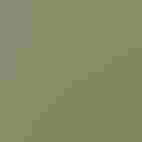Common Tern
At a Glance
One of four very similar terns on this continent. The species lives up to its name as a 'common' tern mainly in the northeast; over much of the continent, it is outnumbered by the similar Forster's Tern. Also widespread in the Old World.
All bird guide text and rangemaps adapted from Lives of North American Birds by Kenn Kaufman© 1996, used by permission of Houghton Mifflin Harcourt Publishing Company. All rights reserved.
Category
Gull-like Birds, Gulls and Terns
IUCN Status
Least Concern
Habitat
Coasts and Shorelines, Freshwater Wetlands, Lakes, Ponds, and Rivers, Open Ocean, Saltwater Wetlands
Region
Alaska and The North, California, Eastern Canada, Florida, Great Lakes, Mid Atlantic, New England, Northwest, Plains, Rocky Mountains, Southeast, Southwest, Texas, Western Canada
Behavior
Direct Flight, Hovering
Population
2.800.000
Range & Identification
Migration & Range Maps
After breeding, may move a short distance north before beginning southward migration. Almost none actually overwinters in North America, although fall migrants may linger to the beginning of January. Winter range is along tropical coasts as far south as Peru and Argentina. Stray Common Terns in Alaska are from a dark-billed race in eastern Asia.
Description
13-16" (33-41 cm). W. 30 (76 cm). Like Forster's Tern but bill is slightly slimmer, redder (less orange) at base in summer. Upperside of wingtip partly a contrasting darker gray. In winter (mostly absent from our area) has solid black from eyes back across nape, not separated patches. Juveniles and fall adults have black shoulder bar.
Size
About the size of a Crow, About the size of a Robin
Color
Black, Gray, Orange, Red, White
Wing Shape
Long, Pointed, Tapered
Tail Shape
Forked, Long, Notched
Songs and Calls
Kip-kip-kip; also tee-aar.
Call Pattern
Falling, Flat, Simple
Call Type
Rattle, Raucous, Scream
Habitat
Lakes, ocean, bays, beaches. Wide range of aquatic habitats in summer, both coastal and inland waters in low-lying, open country, where shallow waters for fishing are close to undisturbed flat islands or beaches for nesting. Winters mostly along coastlines in warm subtropical or tropical waters.
Sign up for Audubon's newsletter to learn more about birds like the Common Tern
Behavior
Eggs
1-3. Variable, buff to pale blue or olive, marked with brown and black. Incubation is by both parents (female may do more), 21-25 days.
Young
Leave nest after a few days but remain nearby, are fed by both parents. Age at first flight about 22-28 days; may remain with parents another 2 months or more. One brood per year, rarely two.
Feeding Behavior
Forages mostly by flying over water, hovering, and plunging to catch prey below surface. Sometimes dips down to take items from surface of water, or pursues flying insects in the air. Occasionally steals food from other terns.
Diet
Mostly fish. Feeds on a wide variety of small fish, focussing on whatever types most easily available, sometimes concentrating on shrimp instead. Also eats other crustaceans, insects, marine worms, small squid, leeches, marine worms.
Nesting
Usually first breeds at age 3-4 years. Nests in colonies, sometimes in isolated pairs. In aerial courtship, groups and pairs perform high flights. Male may fly over colony carrying fish; female follows. On ground, pair postures, bows, struts in circles; male presents fish to female. Nest site is on bare ground or surrounded by low vegetation; sometimes on floating mat of dead vegetation. Nest (built by both sexes) is shallow scrape in soil, usually lined with bits of plant material and debris.
Conservation
Conservation Status
Northeastern populations probably much lower than they were historically. Numbers reduced by plume hunters in late 1800s, increased again with protection early in 20th century, then declined again as populations of predatory large gulls increased in that area. Coastal Common Terns are more and more concentrated in a few well-protected colonies. Some inland populations are declining as well.
Climate Threats Facing the Common Tern
Choose a temperature scenario below to see which threats will affect this species as warming increases. The same climate change-driven threats that put birds at risk will affect other wildlife and people, too.














